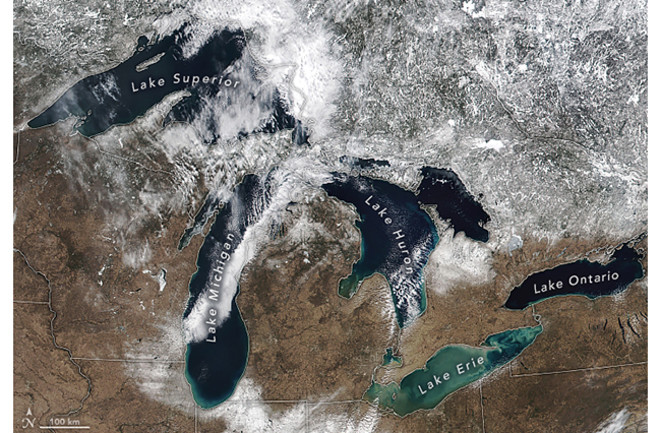Month by month, and season by season, global heating records continue to fall.
After 2023 came in as warmest year (it wasn't even close), and 2024 started with record high temperatures, it should come as no surprise that February was weirdly warm too.
According to the European Union's Copernicus Climate Change Service, last month was the warmest February on record. The global average surface temperature was 1.77 degrees C (3.2 F) above the estimated February average for the pre-industrial era, according to the Copernicus analysis.
Moreover, December through February — meteorological winter in the Northern Hemisphere — also was the warmest such period on record.
The United States got no exemption. According to an analysis released today by NOAA, the December through February winter season ranked as warmest on record for the contiguous U.S.
Considering just February, the month came in as third warmest in NOAA's 130-year record.
Breaching the 1.5 C Degree Limit
February's numbers make it clear that for 12 months in a row, the globe has exceeded the 1.5-degree C limit agreed to under the Paris Agreement. That limit was set to avoid significant escalation of climate risks. But it's important to remember that it pertains to the long term — meaning decades, not years. So it's premature to proclaim the treaty a failure.
Even so, breaching 1.5 degrees C for 12 months — an entire year — is a worrying sign that we're not yet slashing our emissions of carbon dioxide and other greenhouse gases fast enough to keep to the limit.
Our sluggish progress is impacting billions of people around the world. According to a separate report released yesterday by Climate Central, about 80 percent of Earth’s population — some 6.7 billion people — was exposed to unusual warmth linked to climate change between December 2023 and February 2024.
When Will We Catch a Break?
As this map shows, the worrying warmth is likely to continue for at least the next three months:
Of course, there could be surprises ahead, including less warmth than models are forecasting. But the opposite also is quite possible.
Beyond May, the odds of finally catching a break increase. That's because the strong El Niño that has been influencing our weather, and contributing to record-setting warmth, is fading and likely will be gone by June. Moreover, the odds are greater than even that El Niño's opposite, La Niña, will emerge in the fall. And La Niña tends to have a moderating effect on temperatures.
There may be a hint of La Niña's birth in the map above. You can see it in that little patch of blue, meaning relatively cool sea surface temperatures, along the Equator in the Pacific Ocean.
Most of the region is still very warm, characteristic of El Niño. But if cool water surfacing from the deep causes the blue patch to expand, and the atmosphere above begins to respond with changes in wind and precipitation patterns, it would probably herald La Niña's arrival.
Of course, that wouldn't arrest long-term global heating. But it just might give us a temporary reprieve from the unrelenting drumbeat of record-setting temperatures.

